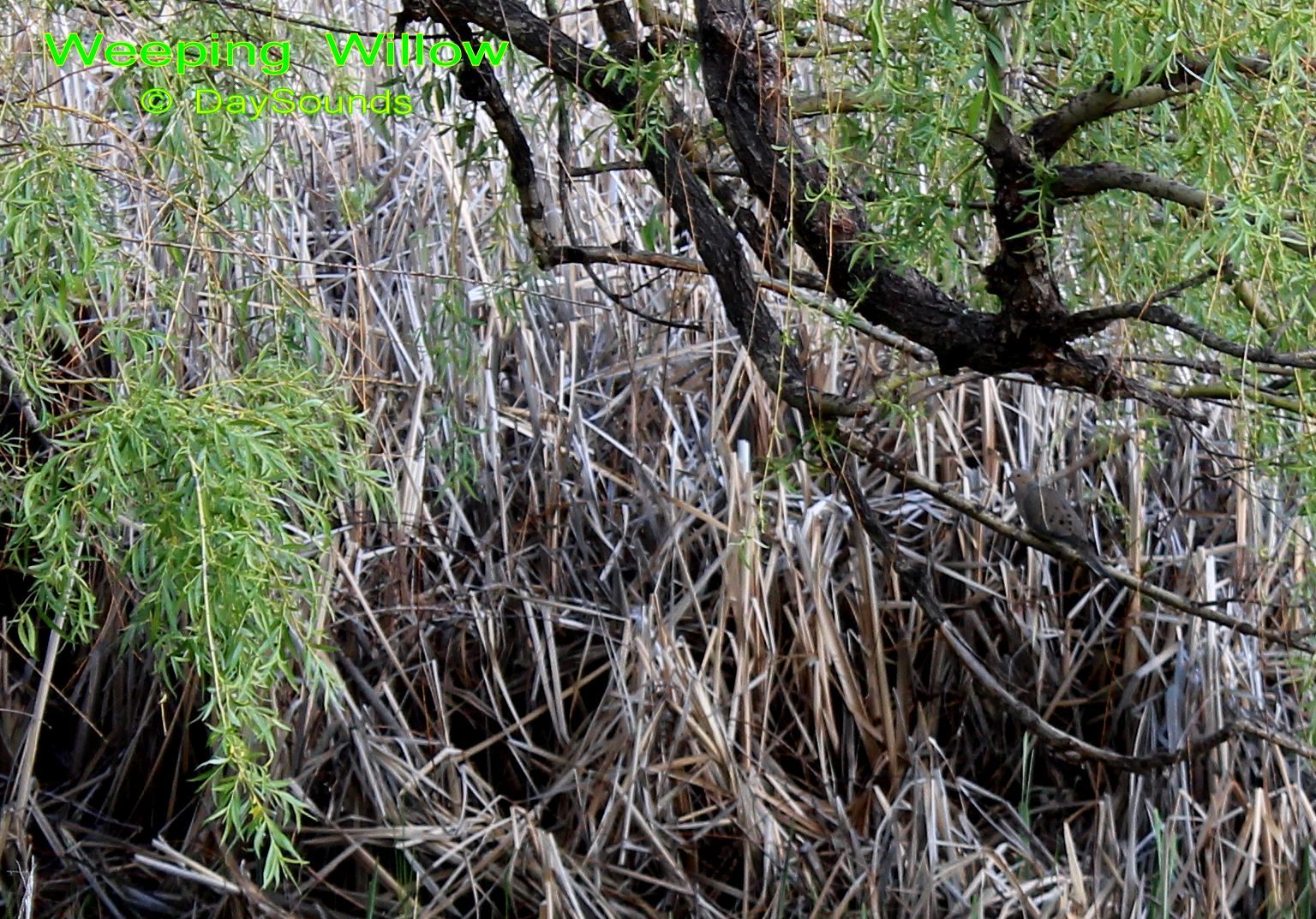by DaySounds © 2013-17

Weeping Willow (Salix babylonica)
plant are edible. It contains salicin*, which makes it useful to reduce fever, pain,
and swelling. It also has anti-acne properties. The largest concentrations of salicin
are found in the cambium, or inner bark, and in the buds. Salicin becomes salicylic
acid when it is oxygenated, process that takes place when it is metabolized in
the body; therefore, when consumed in large amounts or very frequently, it could
create digestive track problems, such as internal bleeding. In moderation, it will
have milder side-effects than the average over-the-counter pain killer. The plant
contains fiber, vitamins and minerals, but little protein. Just remember, when you
use part of the cambium of any tree, to never cut a circle--or even a semi-circle--
around the trunk because it will die. You can use buds and/or young twigs instead.
The thin, hanging branches can also be used to make baskets and nets, among
other utensils (braid them if you need your net or basket to be stronger).
*The plant genus is Salix (willow), from which the name salicin is derived.
© DaySounds
PO Box 2145
Estes Park, CO 80517
USA